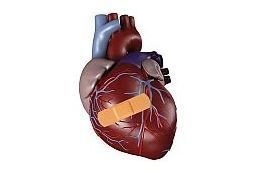
Scientists use tiniest human protein to heal heart
Singapore: Scientists at A*Star's Institute of Medical Biology (IMB) and Institute of Molecular and Cellular Biology (IMCB) have identified a gene encoding a hormone that could potentially be used as a therapeutic molecule to treat heart diseases. The hormone, which they have chosen to name Elabela, is the only 32 amino-acids long, making it amongst the tiniest proteins made by the human body.
The team led by Dr Bruno Reversade carried out experiments to determine Elabela's function, since its existence was hitherto unsuspected. Using zebrafish designed to specifically lack this hormone, they uncovered that Elabela is indispensable for heart formation. Zebrafish embryos without this gene had rudimentary or no heart at all.
Deficiencies in hormones are the cause of many diseases, such as the loss of insulin or insulin resistance, that results in diabetes, and irregularities in appetite and satiety hormones that can cause obesity. Hormones are known to control functions such as sleep, appetite and fertility. However, this is the first time that scientists have revealed the existence of a conserved hormone playing such an early role during embryogenesis, effectively orchestrating the development of an entire organ.
The team also found that Elabela uses a receptor previously believed to be specific to Apelin, a blood-pressure controlling hormone. This receptor called APJ or Apelin Receptor has dual functions, it first conveys signals from Elabela and then from Apelin. Mutations in the Apelin Receptor also prevent the heart from forming. Zebrafish bereft of the Apelin Receptor are referred to as the Grinch, in reference to the cold and heartless cartoon character created by Dr Seuss in 1957.
Elabela has also been found to be expressed in human embryonic stem cells, indicating that it might have other functions beyond its role in cardiovascular development.
The team's findings hold great promise for the potential use of Elabela as a therapeutic molecule for cardiovascular disease to be used in cardiac repair and control of hypertension. As some people might have a harmful copy of the Elabela gene in their genetic make-up, sequencing and screening for this particular gene in the general population might also help to detect predisposition to heart anomalies before the disease progresses.
Dr Bruno Reversade said, "The human genome has been sequenced over a decade ago. That we can still find anonymous hormones charms me. There are a still a few more to discover but not for long."
Prof Birgitte Lane, executive director of IMB, said, "This discovery shows great promise for the development of targeted therapies for heart disease and blood pressure control in the future. It is an excellent example of how basic research can lead to surprising and unexpected findings that may change and refine medical practice."
Prof Hong Wan Jin, executive director, IMCB, said, "I am very pleased with Bruno's achievement as it reflects the synergy of collaboration and joint efforts among various research institutes in Singapore."




